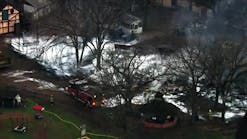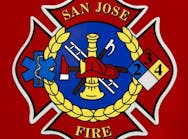The ability of applicants to begin work as soon as an award is given is one of the major priorities because the stimulus is designed to create jobs.
Thanks to the American Recovery and Reinvestment Act (ARRA) the Assistance to Firefighters Grant (AFG) program is going to be opening up a new application period the week of June 8 for the purpose of handling construction-based project needs in the fire service.
Traditionally the only two federal grant programs where construction was eligible are the U.S. Department of Agriculture's Rural Community Initiative program and the U.S. Housing and Urban Development Department's Community Block Development Program, and unless the stars aligned properly under median income eligibility metrics like these weren't available to most of the fire service either. So we've been left out of the construction grant business for a long time, and this program presents the first opportunity for a fire department to make some upgrades in their stations.
While the AFG related programs have always been competitive, the Firefighters Fire Station Construction grant (FSC) program will beat them by a long shot with only $210 million available and an expected 8,000 to 10,000 applications being submitted. So it will be a tight shot, but for many it is the only one available to receive the quantity of funding needed to make the upgrade in facilities.
The gist of the program is straightforward: the maximum total funding to go to one applicant is $15 million and the maximum project under each application is $5 million. Both new construction and renovations are eligible, but there are several areas on both types of projects that are needed to score maximum points.
Since the program is part of the stimulus package a side goal is to create jobs, so the ability of applicants to begin as soon as an award is given is one of the major priorities, along with points going to those that have suffered higher unemployment rates. One of the other major points is those that have the land already purchased and zoned for fire station usage. No preference is specifically being given to new station construction versus renovation/expansion of a department's existing facilities, just the usual ramifications of the unknown cost-benefit equation.
The timeline of the project is also important, which is why the preference is to land-owning applicants since finding properly zoned land at an affordable price is tough in some areas. Those that have drawings, architectural approvals, permits, and other requirements will also score higher. In addition any applicants that have had their construction projects in their Capital Improvement Plan, but have had to continuously abandon them every year because of a tight budget will also receive a higher consideration.
Within the projects themselves the goals are to replace unsafe or uninhabitable structures, again not caring whether this means renovate or build new. So if you've had mold issues, leaking roofs, lack of proper HVAC, or even parts of the station falling off, this would be the program for you.
The second priority is similar to other grant programs in that their goal is awards that will enhance the ability of the organization funded to do their job. In our world this is responding to calls and increasing our abilities to handle different types of calls with enough staffing to meet NFPA 1710 or 1720 requirements, as well as the ability to provide adequate mutual aid when requested. Within that is coupled the need for proper amenities for 24/7 occupation, regardless of whether the department has any paid personnel or not. This means proper male and female bathrooms, male and female bunkrooms, a proper kitchen and eating area, and several other health and safety points related to NFPA 1500, such as a properly sprinklered building, monitored smoke/carbon monoxide alarm system, and exhaust removal systems -- vehicle mounted systems are not eligible.
There is no match required in the FSC program, but as the guidelines mention, "the willingness or ability of a community to contribute to the project is a desirable attribute." Read that as if you have money to put up, put it up to score higher. Applicants will be held to whatever funding amount you put down, so make sure it's a figure that you can manage. Those with building funds will want to mention that and put them up as the offering. If it comes down to the wire this could be the difference between receiving something and receiving nothing.
As we saw in the 2009 AFG program for the equipment application the training level of the applicants personnel will be part of the scoring. Those having a higher percentage of active firefighters trained to the NFPA 1001 certification level--Firefighter 1 and 2--will be scored higher. Training materials and courses are not eligible in this program; neither is training props, furniture, or structures dedicated solely to training, so this program is not the fix for that particular deficiency.
This program has also turned "Green" like most other construction projects that are done with federal funding in that environmental impact, both inside and outside, is being looked at. Certainly nothing can be built in wetlands areas or designated floodways, and any station over 50 years old that will be demolished or renovated is subject to a historical building review.
These are not new items in the construction world and they follow common sense, but the big new elephant in the room for most applicants will be the U.S. Green Building Council's Leadership in Energy and Environmental Design (LEED) Green Building Rating System. This scoring system evaluates energy saving initiatives such as reduced potable water usage, natural lighting, automated lighting controls and Energy Star appliances, in order to reduce the long-term impact of the facility on its surroundings and the environment in general. The higher the certification of the project, the more points can be scored. This is why it is important to have proper contact with architects and engineers since this isn't something the average layman knows about, plus as with most improvements like this it increases the cost of the project.
The other issue affecting cost is the requirement for Fair Wage practices under the Davis-Bacon Act, which dictates minimum wages for certain jobs on a construction site. Many engineers and architects can easily include these wage levels in their estimates, but since applicants will be held to these numbers you might want to ensure that it happens. The Department of Labor site has a series of tables for each county in the country so you can find the proper amount to double check your numbers with.
DHS stated in the guidelines that they expect to see 8,000 to 10,000 applications totaling over $30 billion so that $210 million that's to be allocated won't go too far into that list. But like any other grant application, that doesn't mean that you should balk on the narrative portion of the application. No one can ever predict what applications will and won't reach the peer review process, so the best practice that I've always advocated is bulletproof the narrative just in case you do make it. They will be reading $420 million worth of requests with half being turned down, so you don't want to have the mindset that you can't get funded and then make it into review and lose out based on not having the right information. Especially since the program guidelines have some basic questions right in them for each section of the narrative that need to be answered to score well. We have no excuse when they give us the test before we sit down to take it.
Many of you may read this article, other articles, or even just the guidelines and say "it's not for us, we'll never get funded," and then not even apply. To this group I give the same advice I give everyone that comes to us with grant work: apply anyway. With this being the first year of the program and currently the only application period planned for this program, since we're not going to have a stimulus bill every year, we need to get the message across to our elected officials that this program needs to be added to the regular rotation along with AFG, SAFER, and Fire Prevention & Safety programs. We need to lobby to put the funding in place so that more of our needs can be funded.
Related Links
- 2009 Program Guidance for the Assistance to Firefighters Fire Station Construction Grant (PDF)
- Leadership in Energy and Environmental Design (LEED) Green Building Rating System
- Davis-Bacon Act
- Fire Grants Support Website
- Vickers Consulting Services
BRIAN P. VICKERS, a Firehouse.com Contributing Editor, has been in the fire service for 16 years and is currently with the Westlake Volunteer Fire Department in Houston. He is CEO of Vickers Consulting Services (VCS), one of the country's leading public safety consulting firms specializing in strategic financial planning and grants. To date VSC has helped their clients receive nearly $120 million in grant awards. To read Brian's complete biography and view his archived articles, click here. Brian has hosted a variety of podcasts that look at the Assistance to Firefighter Grants program. You can reach Brian by e-mail at [email protected].





